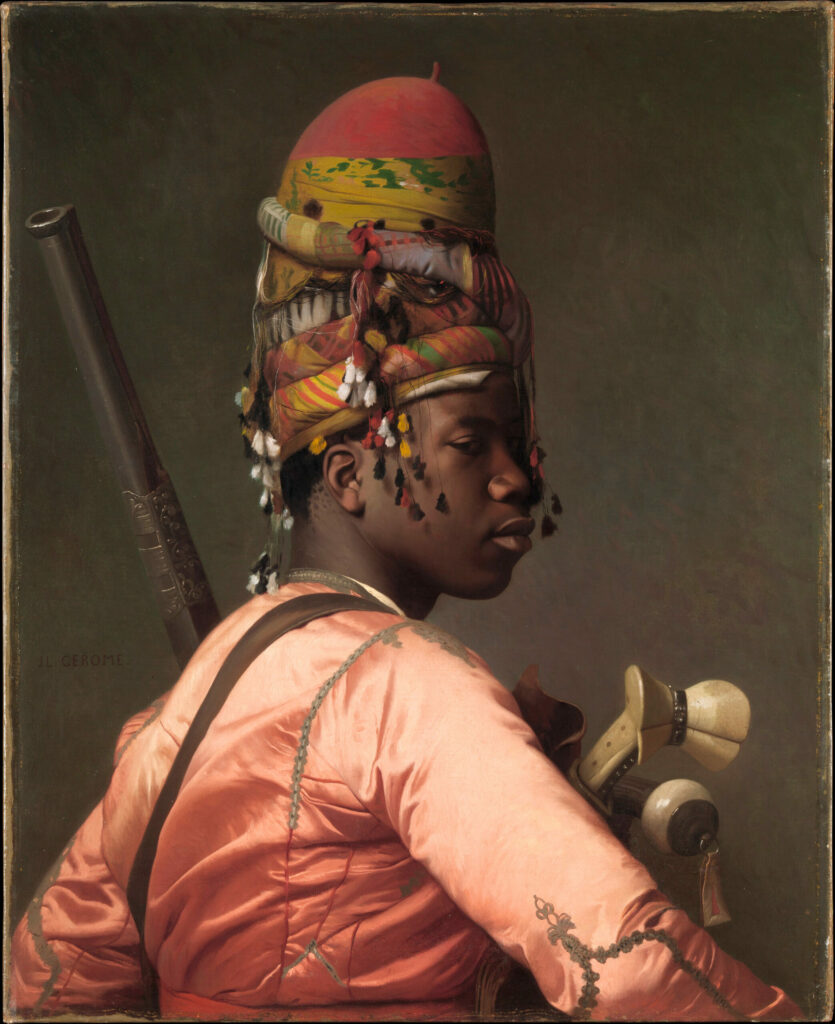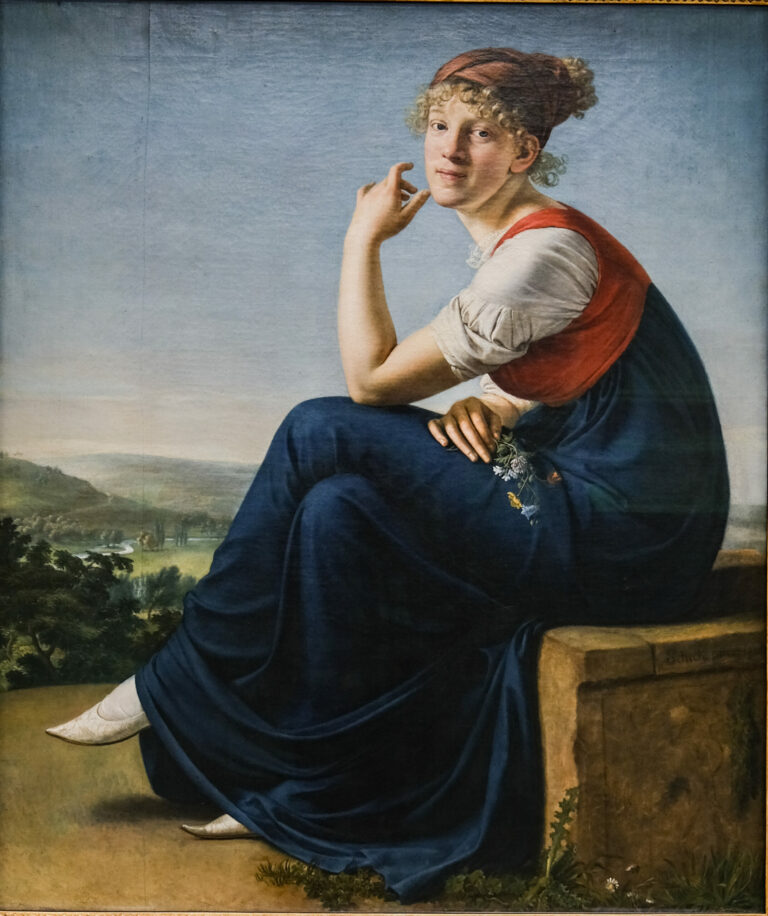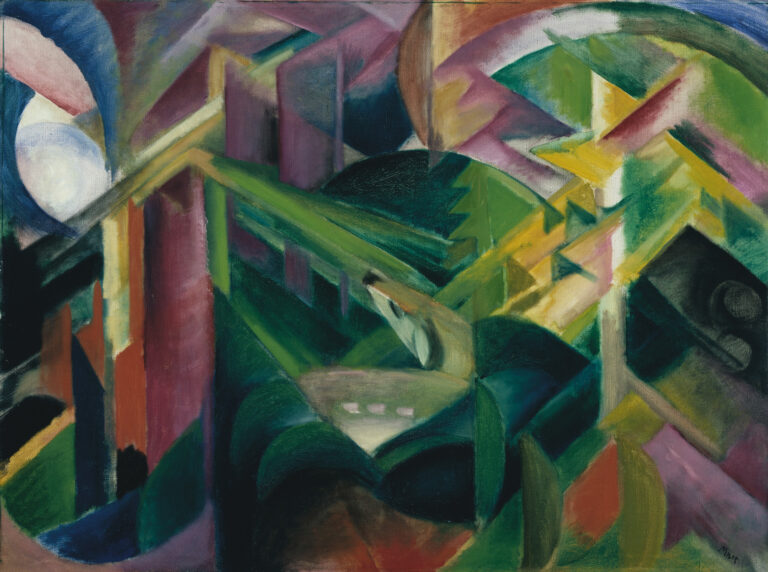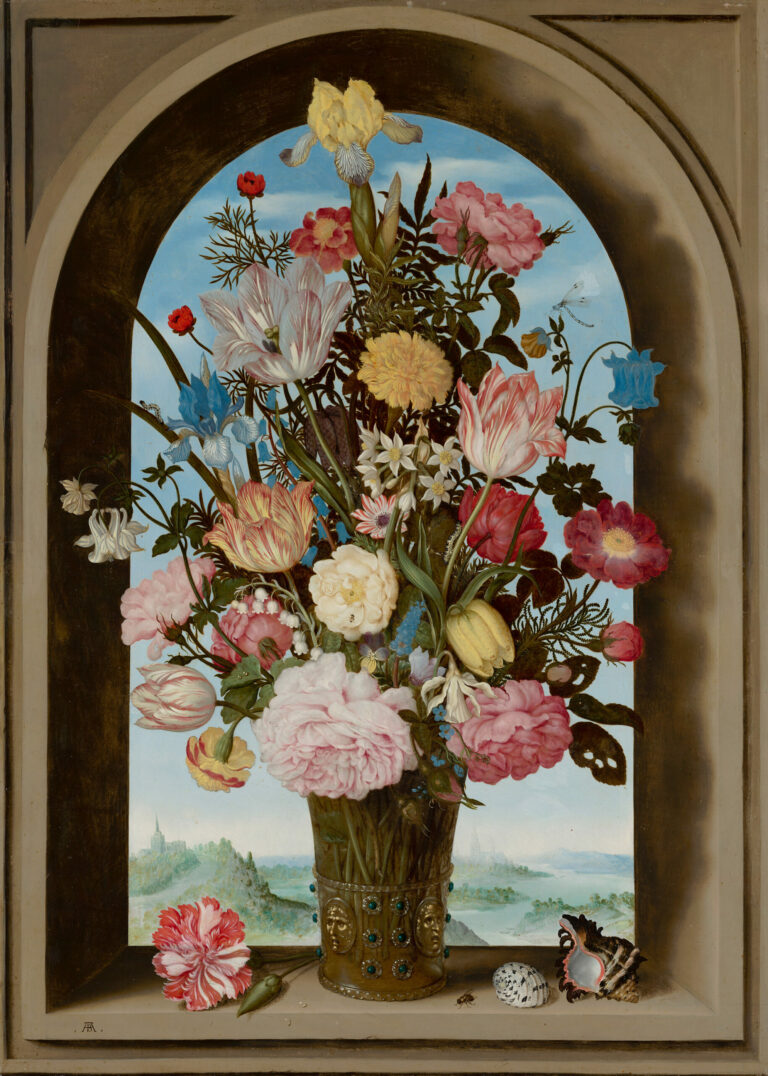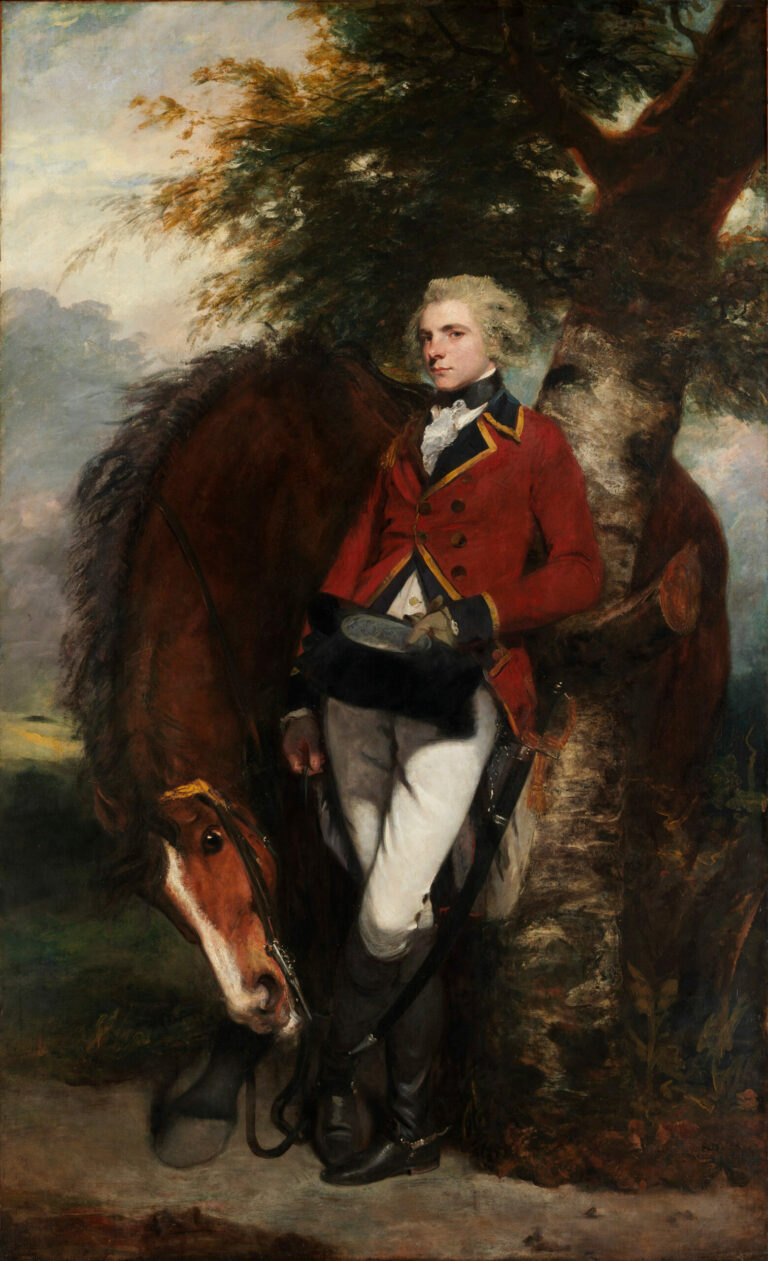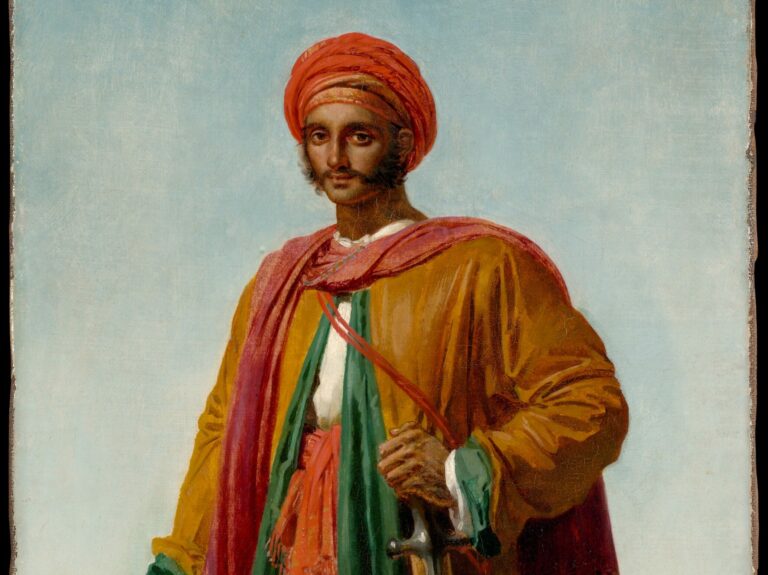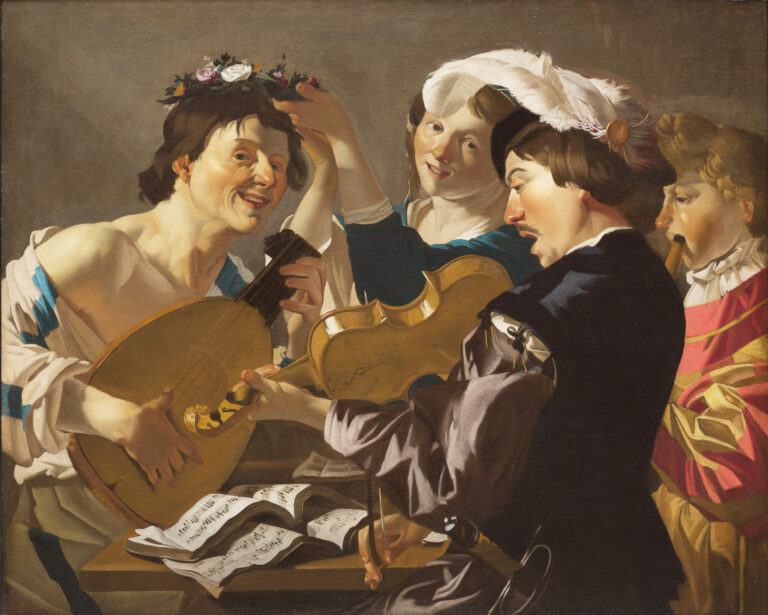Here we have a work by Jean-Léon Gérôme where the Orient is embodied in a portrait of remarkable precision. This Bashi-Bazouk captivates us with his profile that is both noble and mysterious, captured in a moment of calm that contrasts with the reputation for ferocity associated with these Ottoman mercenaries.
The composition highlights the richness of the sartorial details: the turban with its shimmering fabrics adorned with pearls and pendants, the salmon-colored tunic delicately embroidered with green motifs. Light caresses the textiles and the model’s skin, creating plays of shadow and clarity that sculpt his face with its refined and concentrated features. The discreet presence of weapons – a rifle and a pistol – recalls the warrior vocation of the character, while the dark background brings out the warm colors and the minutiae of the textures.
Further information
- Bashi-Bazouk, by Jean-Léon Gérôme, 1868-1869
- 80.6 x 66 cm (31 3/4 x 26 in.)
- The Metropolitan Museum of Art, Fifth Avenue, New York, displayed in Gallery 804
- https://www.metmuseum.org/art/collection/search/440723
Jean-Léon Gérôme (1824-1904), master of French academicism and emblematic figure of pictorial Orientalism, created this work at the height of his artistic powers. Following a twelve-week journey to the Near East in 1868, he brought back not only sketches but also authentic textiles that he used to dress his Parisian models. This method reveals his characteristic approach: a quest for ethnographic accuracy combined with masterful studio staging. Unlike his more spectacular or anecdotal Orientalist paintings, Gérôme here offers a vision imbued with respect and dignity, transcending more exotic clichés. This work bears witness to his legendary technical virtuosity, particularly in the rendering of different materials and textures, and illustrates how the artist could sometimes surpass simple colonial fantasy to achieve pictorial poetry.

